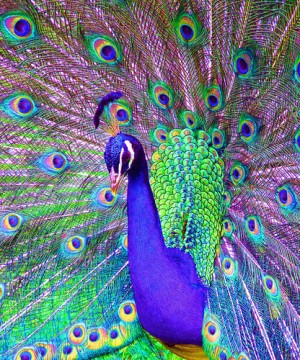Read the rest.The Bold and the Beautiful

Personality is a complicated interplay of traits that influence well-being, cognition and mental health. The so-called Big Five personality traits include extraversion, agreeableness, conscientiousness, neuroticism and openness. It is difficult to quantify personality characteristics and their roles in mood, behavior and reasoning, but several recent studies have proclaimed the significant effect of extraversion — the trait that includes talkativeness, excitability, assertiveness and sociability — on everything from positive mood to creativity and humor.
Personality and positive mood influence cognition, including creativity, executive function and free recall. One recent study found that the more extraverted an individual, the greater the induction of positive mood. Extraverts are apparently predisposed to a happier, more positive affect; they also enjoy enhanced creativity compared to introverts — individuals who tend to be more introspective and less outgoing and sociable.
By News Staff | July 3rd 2010Read more.
Neural circuitry is constantly changing to meet the challenges of its environment and ahead of his presentation on July 6th, sponsored by The Kavli Foundation, at the 7th FENS Forum of European Neuroscience in Amsterdam, Tobias Bonhoeffer, director at the Max Planck Institute of Neurobiology in Martinsried, Germany, offers insight into how new techniques enable researchers to watch this process of adaptation as never before.
What happens to our brains as we experience the outside world? Scientists have learned that the brain undergoes structural changes as it absorbs sensory data, learns and adapts, but the actual mechanism of this process is just now coming into view.
The following is an edited transcript of an interview provided by the Kavli Foundation, conducted June 10, 2010.
Could you start by giving us a brief preview of what you’ll be covering in your FENS lecture?
What we’re working on in my lab is neuronal plasticity -- how the brain adapts to changes in the environment. Such adaptations can be relatively straightforward. For example, if an animal loses a limb or an eye, the brain adapts to that and partially compensates for the missing information. Other adaptations are more subtle – when, for instance, an animal hides food for the winter and remembers the place later on. Although these things may seem quite different, they have one thing in common, namely that in both cases the brain enables an animal to adapt its behavior because of challenges in its environment.
Over the last couple of years our field has made such fundamental progress that we are now able to really look into the brain and see how it works, in the living animal. We are now able to see the changes related to such adaptations and to see how nerve cells form new connections or how connections between nerve cells are broken. This is basically what I will cover in my lecture. I will talk about our studies investigating what happens when nerve cells make new connections in vitro, i.e. in cell culture. I will on the other hand also talk about our in vivo studies, in which we study the intact organism. We are now able to look into the brain of an animal and see how nerve cell connections are made or broken, and how that relates to learning or other adaptive changes.
How close are you to understanding the mechanism of synaptic plasticity? Is there a particular knowledge breakthrough, a “Holy Grail,” that you're seeking?
Like always in science, that really depends on the level of detail with which one is satisfied. You can always, once you’ve understood something, go further and say, well, we’ve still not completely understood it, so let’s go to the next step. It’s difficult to say how far we’ve gotten. I’d say we’ve understood a couple of fundamental steps. We know, for instance, quite precisely which receptors in the brain are responsible for changes in the functional connections between nerve cells, the synapses; we also know the rules, when synapses get stronger and when they get weaker. All those things are quite well understood and have been elucidated over the last 10 to 15 years or so. But that’s not to say there isn’t plenty of stuff left to be discovered. Science is a never-ending story, which is partly also the fun of it.
In reference to the “Holy Grail,” at least in my personal lifetime or my scientific lifetime, what I would really like to be able to show is that it is really the changes in connections between nerve cells that cause information to be stored in the brain. It would be great to show for instance, that an animal learns something and you see that a thousand synapses change. Then, when you disable those thousand synapses, you see that the animal has forgotten exactly what it had learned before -- but nothing else.
No comments:
Post a Comment